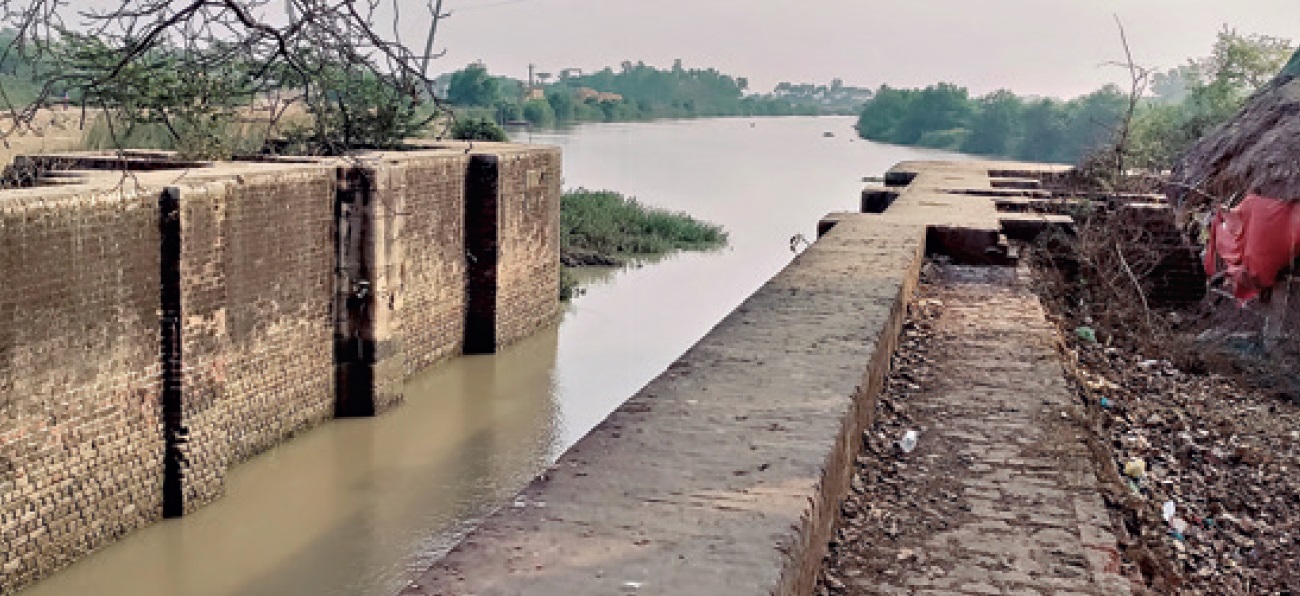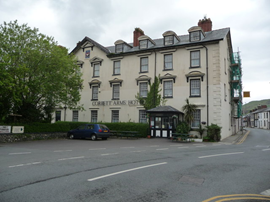Restoring the Odisha East Coast Canal
The restoration of the East Coast Canal in Odisha, India, would contribute to irrigation, navigation, defence, waterpower, flood mitigation, land drainage and water supply.

|
| The canal ended at Charbatia village in the present-day Bhadrak district of Odisha, connecting to the Matei river. The aerial photo shows the same location. |
The East Coast Canal in Odisha (formerly Orissa) was built by the British as a lifeline to the communities along its length, following a famine in 1866. The canal has considerable archaeological and historic interest, and a national heritage designation. However, due to neglect and lack of investment, it is now unusable. Its restoration would bring tremendous economic, social, ecological and heritage benefits.
The 1866 famine was the most devastating in India’s colonial history. One third of the population of the then Odisha province perished following crop failure through sustained drought, exacerbated by appalling transport infrastructure. The secretary of state for India ordered an inquiry into the catastrophe and a commission was appointed in December 1866. The commission’s report highlighted the abysmal state of communications in Odisha. There was no rail connection, seaports were poor, and the few roads through the state were impassable in the monsoon season.
The commission’s recommendation to construct a canal constituted an important milestone in the Odisha’s economic history. The greater part of the province had been inaccessible to ordinary trade, meaning that when relief for the famine was eventually procured, it could not be transported because of the appalling road infrastructure. The commission recommended constructing a trunk road and making the existing irrigation canals navigable. As a result, several canals were developed in Odisha specifically for communication purposes. The government realised that if another famine visited the region, with this canal functioning as a major transport route, a vast number of boats from the rivers of lower Bengal could carry the grain without any additional expense to the government.
The building of the East Coast Canal started in 1880–81. It was planned to link to other waterways with full-sized locks (150 by 20 feet), allowing all vessels to pass along it. The canal was completed in 1885, providing transport regardless of the state of the roads and a system of irrigation in times of drought. Fed by four rivers, the canal had a consistent supply of water even during a drought. The extraordinary commitment to the canal was, in part at least, a result of the realisation that it could prove to be highly remunerative as a trade route, yielding considerable revenue.
Unesco has long recognised canals as heritage. ‘A canal is a human-engineered waterway. It may be of outstanding universal value from the point of view of history or technology, either intrinsically or as an exceptional example representative of this category of cultural property. The canal may be a monumental work, the defining feature of a linear cultural landscape, or an integral component of a complex cultural landscape. The significance of canals can be examined under technological, economic, social, and landscape factors’ (Unesco Convention, 1994).
Unesco highlights the crucial importance of waterscapes and historic canals as visible infrastructural networks constituting a significant part of world history. This is especially true in the field of industrial archaeology, such as bridges, lock systems, hydraulic factories, warehouses and river ports. Canals also have potential for developing sustainable tourism, responding to the growing demand for cultural and environmental protection, and for high-quality recreation.
The East Coast Canal can serve a variety of purposes: irrigation, navigation, defence, waterpower, flood mitigation, land drainage and water supply. Special technological significance is added by features such as the lining and waterproofing of the water channel, comparative structural features in other areas of architecture and technology, and the development of sophisticated constructional methods.
Steamers plied the canal until a severe flood in 1973, and the lack of governmental effort to remedy its effects, resulted in its gradual decline. The government of India has recognised the importance of the canal and seeks to develop a proposal for its revival. Its restoration has the potential to contribute to water conservation, irrigation, the provision of safe drinking water, tourism, agriculture and flood control.
The region’s people are campaigning to secure the canal’s restoration, building on collective memories. The Odisha Coast Canal Revival Forum is fostering awareness of the potential of the restored canal and seeks to raise funds to bring this heritage asset back into full use.
This article originally appeared in the Institute of Historic Building Conservation’s (IHBC’s) Context 176, published in June 2023. It was written by Gobinda Ballava Dalai and Kathryn Davies. Gobinda Ballava Dalai works on habitat development, water, sanitation and education. He is a board member of the Mauna Dhwani Foundation, which gives a voice to women in marginalised communities through training in traditional weaving skills. Kathryn Davies, formerly vice chair of the IHBC, is a heritage and planning consultant. She has been supporting the Mauna Dhwani Foundation in Odisha: the East Coast Canal passes close to the area where the foundation is based.
--Institute of Historic Building Conservation
Related articles on Designing Buildings
IHBC NewsBlog
Images from inside a Grade II listed hotel show the scale of its collapse
The Corbett Arms in Tywyn has fallen into serious disrepair.
Old Sarum fire in listed (& disputed) WW1 Hangar - Wiltshire Council has sought legal advice after fire engulfed a listed First World War hangar that was embroiled in a lengthy planning dispute.
UK Antarctic Heritage Trust launches ‘Virtual Visit’ website area
The Trust calls on people to 'Immerse yourself in our heritage – Making Antarctica Accessible'
Southend Council pledge to force Kursaal owners to maintain building
The Council has pledged to use ‘every tool in the toolbox’ if urgent repairs are not carried out.
HE’s Research Magazine publishes a major study of the heritage of England’s suburbs
The article traces the long evolution of an internal programme to research 200 years of suburban growth
IHBC Context 183 Wellbeing and Heritage published
The issue explores issues at the intersection of heritage and wellbeing.
SAVE celebrates 50 years of campaigning 1975-2025
SAVE Britain’s Heritage has announced events across the country to celebrate bringing new life to remarkable buildings.
IHBC Annual School 2025 - Shrewsbury 12-14 June
Themed Heritage in Context – Value: Plan: Change, join in-person or online.
200th Anniversary Celebration of the Modern Railway Planned
The Stockton & Darlington Railway opened on September 27, 1825.
Competence Framework Launched for Sustainability in the Built Environment
The Construction Industry Council (CIC) and the Edge have jointly published the framework.














